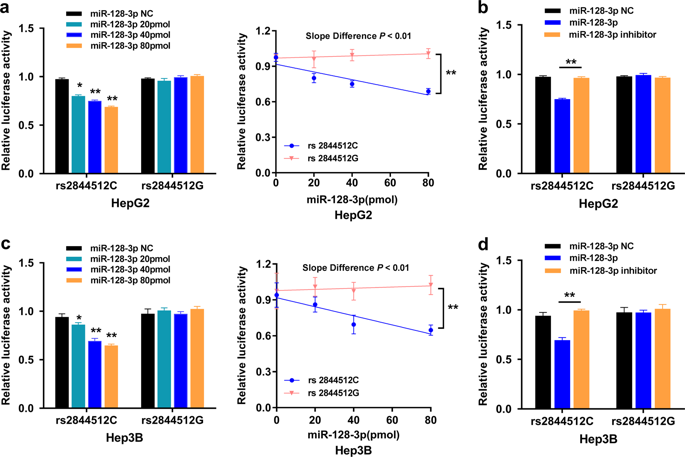Our official English website, www.x-mol.net, welcomes your
feedback! (Note: you will need to create a separate account there.)
LINC01149 variant modulates MICA expression that facilitates hepatitis B virus spontaneous recovery but increases hepatocellular carcinoma risk.
Oncogene ( IF 6.9 ) Pub Date : 2019-11-21 , DOI: 10.1038/s41388-019-1117-7 Rong Zhong 1 , Jianbo Tian 1 , Mingpeng Fu 2 , Simin Ma 2 , Li Liu 3 , Jiaoyuan Li 1 , Na Shen 4 , Juntao Ke 1 , Yang Yang 1 , Yajie Gong 1 , Ying Zhu 1 , Ying Wang 5 , Jing Gong 1 , Jiang Chang 1 , Ping Lei 2 , Xiang Cheng 6 , Kun Huang 7 , Guanxin Shen 2 , Xiaoping Miao 1
Oncogene ( IF 6.9 ) Pub Date : 2019-11-21 , DOI: 10.1038/s41388-019-1117-7 Rong Zhong 1 , Jianbo Tian 1 , Mingpeng Fu 2 , Simin Ma 2 , Li Liu 3 , Jiaoyuan Li 1 , Na Shen 4 , Juntao Ke 1 , Yang Yang 1 , Yajie Gong 1 , Ying Zhu 1 , Ying Wang 5 , Jing Gong 1 , Jiang Chang 1 , Ping Lei 2 , Xiang Cheng 6 , Kun Huang 7 , Guanxin Shen 2 , Xiaoping Miao 1
Affiliation

|
Interpreting disease-causing variants, especially in noncoding regions by genome-wide association studies (GWAS), has become one of the most challenging and demanding tasks. We hypothesized that functional lncRNAs variants in GWAS-identified loci might alter expression level of genes associated with persistent HBV infection and hepatocellular carcinoma (HCC). Integrated bioinformatics approaches were used to prioritize potentially functional variants and a two-stage case-control study (2473 HBV positive HCC patients, 2248 persistent HBV carriers and 2294 spontaneously recovered subjects) was performed to assess the roles of these variants. The rs2844512 G > C variant in LINC01149 was identified to facilitate HBV spontaneous recovery (OR = 0.84, 95% CI = 0.77-0.92) but increase the risk of HCC (OR = 1.21, 95% CI = 1.11-1.32) in combined samples. Subsequent biological assays indicated this variant created a binding site for miR-128-3p and upregulated MICA expression by serving as a miRNA sponge, which might recruit NK-cells to lyse infected cells, but release highly soluble MICA by shedding to induce NK-cells exhaustion and tumor immune evasion. These findings highlight a regulatory circuit between LINC01149 and MICA, mediating by miR-128-3p, and the important role of upregulated MICA in conferring susceptibility to persistent HBV infection and HCC.
中文翻译:

LINC01149 变体调节 MICA 表达,促进乙型肝炎病毒自发恢复,但增加肝细胞癌风险。
通过全基因组关联研究 (GWAS) 解释致病变异,特别是在非编码区域,已成为最具挑战性和要求最高的任务之一。我们假设 GWAS 识别的基因座中的功能性 lncRNA 变体可能会改变与持续性 HBV 感染和肝细胞癌 (HCC) 相关的基因的表达水平。综合生物信息学方法用于优先考虑潜在的功能变异,并进行了两阶段病例对照研究(2473 名 HBV 阳性 HCC 患者、2248 名持续性 HBV 携带者和 2294 名自发康复的受试者)来评估这些变异的作用。LINC01149 中的 rs2844512 G > C 变异被鉴定为促进 HBV 自发恢复(OR = 0.84, 95% CI = 0.77-0.92),但增加了合并样本中 HCC 的风险(OR = 1.21, 95% CI = 1.11-1.32) . 随后的生物学分析表明,该变体为 miR-128-3p 创造了一个结合位点,并通过充当 miRNA 海绵上调 MICA 表达,这可能会募集 NK 细胞以裂解受感染的细胞,但通过脱落以诱导 NK 细胞释放高度可溶的 MICA衰竭和肿瘤免疫逃避。这些发现强调了 LINC01149 和 MICA 之间由 miR-128-3p 介导的调节回路,以及上调的 MICA 在赋予持续性 HBV 感染和 HCC 易感性中的重要作用。
更新日期:2019-11-21
中文翻译:

LINC01149 变体调节 MICA 表达,促进乙型肝炎病毒自发恢复,但增加肝细胞癌风险。
通过全基因组关联研究 (GWAS) 解释致病变异,特别是在非编码区域,已成为最具挑战性和要求最高的任务之一。我们假设 GWAS 识别的基因座中的功能性 lncRNA 变体可能会改变与持续性 HBV 感染和肝细胞癌 (HCC) 相关的基因的表达水平。综合生物信息学方法用于优先考虑潜在的功能变异,并进行了两阶段病例对照研究(2473 名 HBV 阳性 HCC 患者、2248 名持续性 HBV 携带者和 2294 名自发康复的受试者)来评估这些变异的作用。LINC01149 中的 rs2844512 G > C 变异被鉴定为促进 HBV 自发恢复(OR = 0.84, 95% CI = 0.77-0.92),但增加了合并样本中 HCC 的风险(OR = 1.21, 95% CI = 1.11-1.32) . 随后的生物学分析表明,该变体为 miR-128-3p 创造了一个结合位点,并通过充当 miRNA 海绵上调 MICA 表达,这可能会募集 NK 细胞以裂解受感染的细胞,但通过脱落以诱导 NK 细胞释放高度可溶的 MICA衰竭和肿瘤免疫逃避。这些发现强调了 LINC01149 和 MICA 之间由 miR-128-3p 介导的调节回路,以及上调的 MICA 在赋予持续性 HBV 感染和 HCC 易感性中的重要作用。









































 京公网安备 11010802027423号
京公网安备 11010802027423号